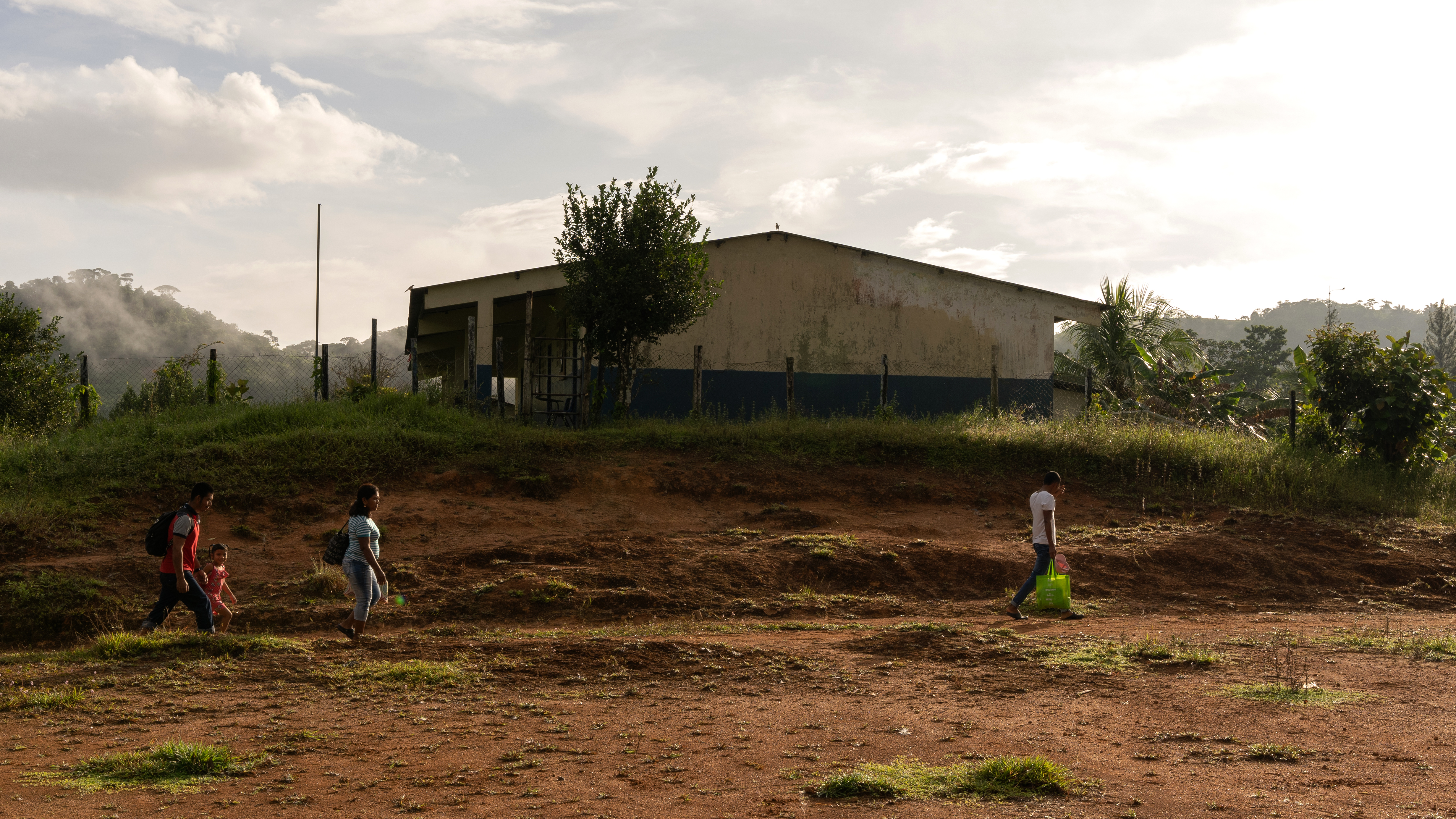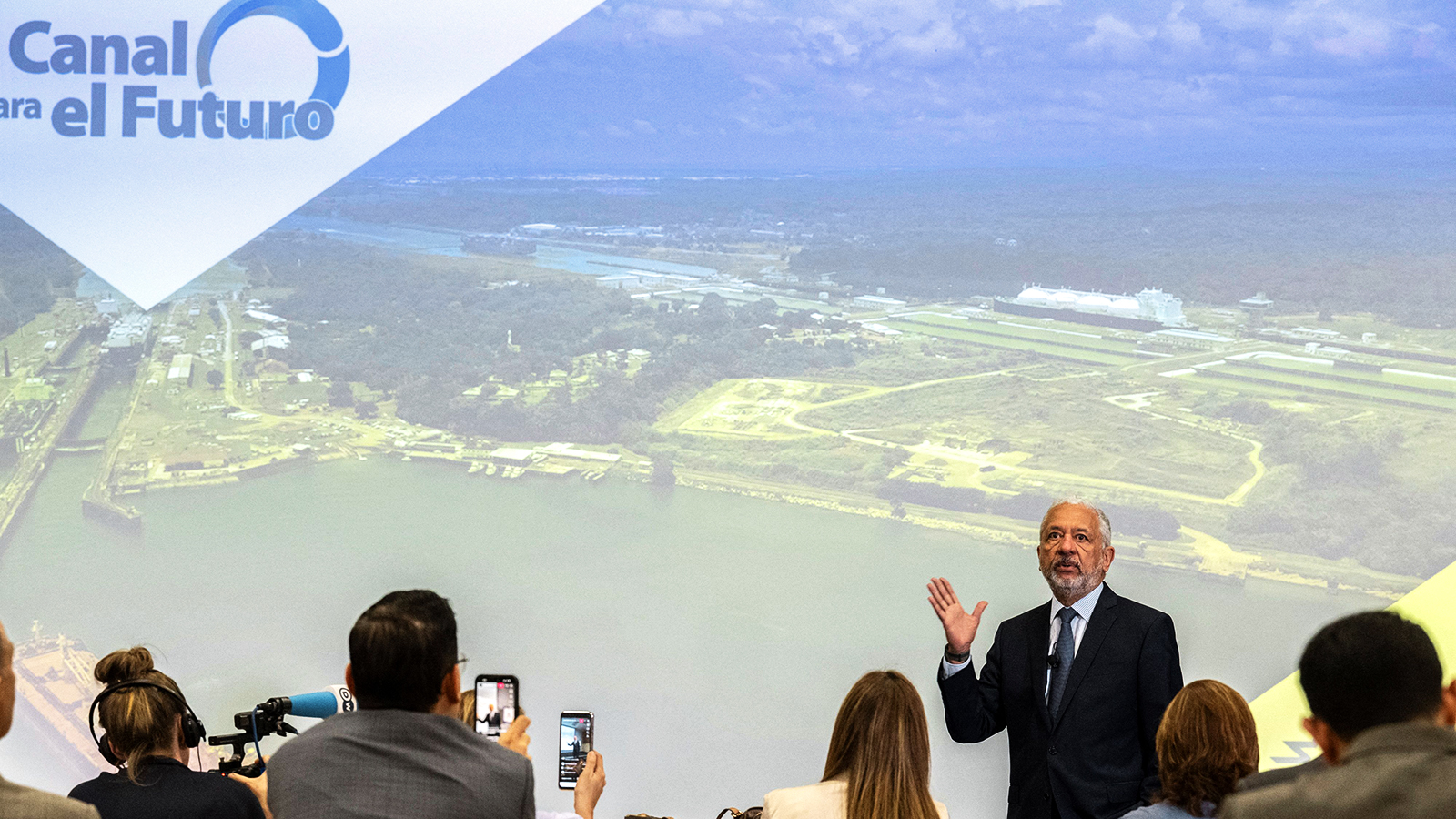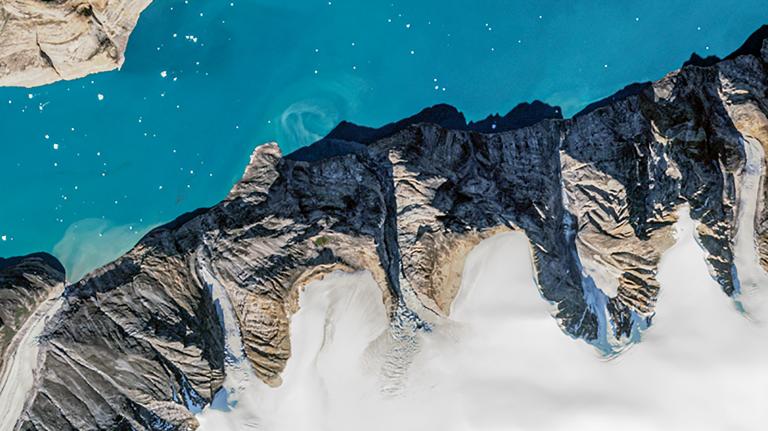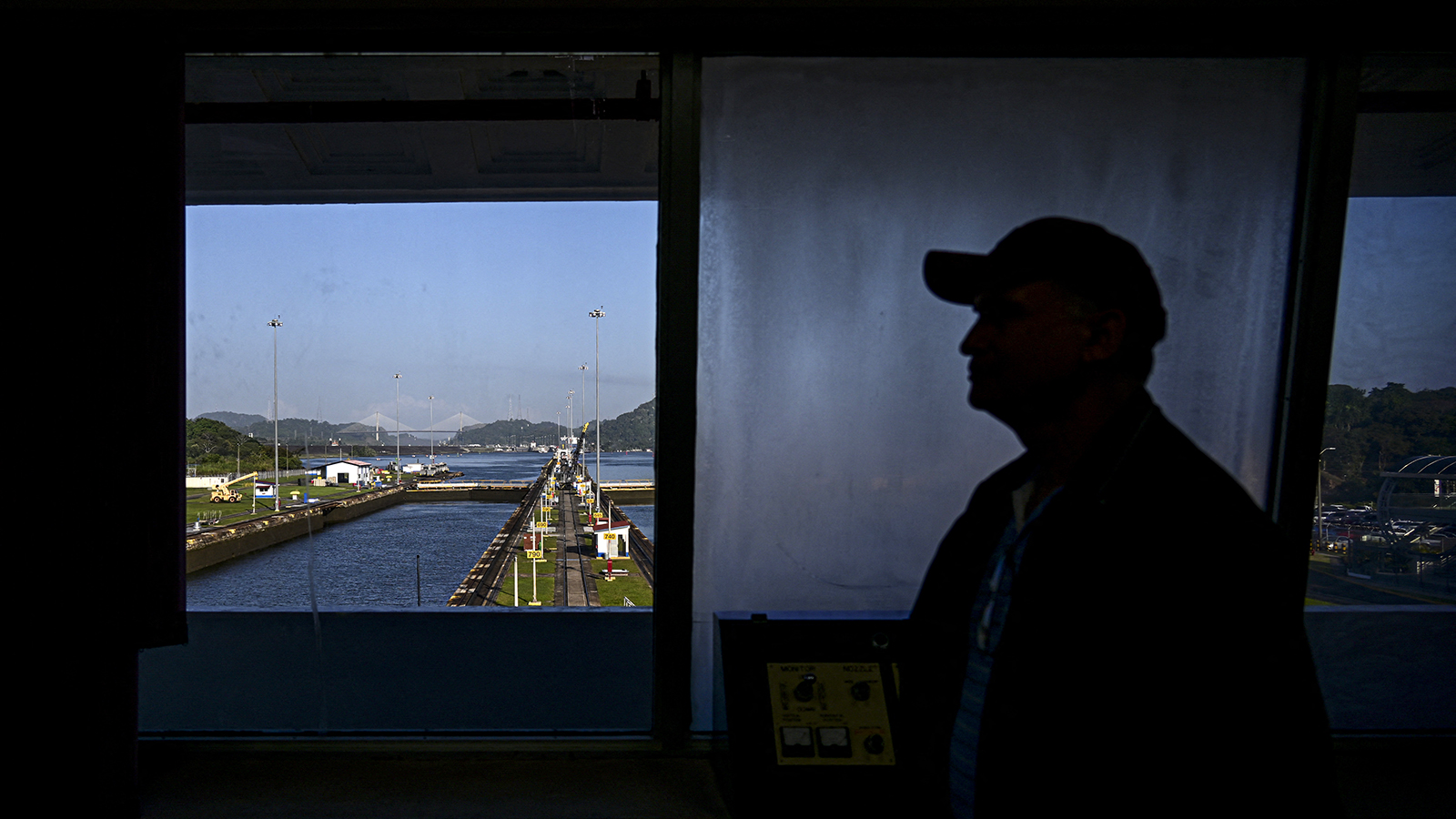Thousand-foot-long ships chug through the Panama Canal’s waters each day, over the submerged stumps of a forgotten forest and by the banks of a new one, its canopies full of screeching parrots and howler monkeys. Some 14,000 ships pass through its locks every year, their decks stacked high with 6 percent of the world’s commercial goods, crisscrossing the paths of tugboats on the voyage between oceans.
In early 2023, the weather pattern known as El Niño ushered in a drought that choked traffic through the canal, dropping water levels in Lake Gatun, the canal’s main reservoir, to record lows and revealing the tops of trees drowned when the canal was created at the start of the last century. It takes 52 million gallons of water to get a cargo ship through the canal’s locks, and by December, only 22 of the usual 36 ships were allowed to make the passage each day. Some vessels opted for lengthy routes around Africa instead, while others bid as much as $4 million to skip the queue that had grown to more than a hundred ships.
Over a year later, the water is rising and the logjam has cleared, thanks to increased rainfall as well the Panama Canal Authority’s water management and a recently installed third-set of water-recycling locks. But the problems are sure to reappear: El Niño returns every 2 to 7 years, and when it does, climate change will continue kicking it into higher gear. Panama’s growing urban population also needs drinking water — much of it sourced from the same Lake Gatun that feeds the canal’s locks.
“This means that if we do not increase water capacity in about a decade, we will not be able to provide water to the citizens,” said Óscar Ramírez, the president of the canal authority’s water resources committee, during a press conference this summer, according to the newspaper La Estrella de Panamá.

With a future crisis seeming inevitable, the canal authority is turning to a long-contemplated solution: Dam the neighboring Río Indio to create a new reservoir, which could be tapped to replenish the canal when the water levels drop, and dig a 5-mile-long tunnel to connect it to the canal. The idea effectively got the greenlight this summer when the Supreme Court struck down an old law, and in doing so, expanded the canal authority’s jurisdiction to include the Río Indio basin. In total, the project would likely take six more years and $1.6 billion. Once the reservoir is built, Ramírez told reporters, both locals and the canal will have all the water they need for another 50 years.
Filling the reservoir would submerge about 17.7 square miles of land, currently home to more than 2,000 Panamanians, according to La Estrella de Panamá. Building the dam will require relocating schools, health centers, and churches that serve them. An additional 12,000 people, many of them farmers, live in the surrounding area.
Humans have been building dams for thousands of years, but such mega dam projects are a hallmark of economic development in modern times. According to the International Displacement Monitoring Centre, dams displaced an estimated 80 million people worldwide during the 20th century, and information about their fate is scarce. The canal authority acknowledges the hardship that moving would impose on people, and has said that they won’t begin construction until they’ve consulted with these residents and heard their concerns.
“I think there’s often a better alternative than building a new dam, but obviously dams are still going to be built,” said Heather Randell, an assistant professor of global policy at the University of Minnesota who has studied the impact of dam projects on communities. In her research, she found that people forced to move often lose their social networks and livelihoods, and wind up in poverty. In Vietnam, construction of the Son La Hydropower dam in the mid 2000s displaced 90,000 people and moved them to smaller plots of farmland. On average, incomes fell by 65 percent.
The lives of people nearby are often disrupted, too. As the diverted water upsets the ecosystem, neighboring areas might have trouble finding food, or see diseases spread more quickly. In Africa, for instance, decades of research shows multiple instances of schistosomiasis, a chronic disease caused by parasitic worms, spiking near dam projects and man-made reservoirs. In many regions, climate change is amplifying these problems.

Although there is no harm-free way to displace people, Randell says, compensating them fairly for their lost livelihoods and land can help. In the 1970s, the government of Panama promised to make such payments to thousands of Indigenous people from the Kuna and Emberá communities who had to relocate for a large hydroelectric dam in Panama’s Darién Province. In 2014, the Inter-American Court of Human Rights found that the government never made these payments and failed to provide titles to protect their new lands, leaving them vulnerable to invasion by illegal settlers. Nowadays, Randell says, there’s “definitely been improvements in recognizing that if you’re going to displace a bunch of people you should be fairly compensating them.”
The canal authority says it plans to compensate residents, with the aim of improving or maintaining their quality of life. “If a person has livestock, we must preserve that livestock even if they are displaced, because it is their livelihood,” said Ricaurte Vásquez Morales, the Panama Canal Authority’s administrator, according to Estrella de Panamá’s reporting. According to El Siglo, another national newspaper, the authority has held meetings with more than 1,600 people living in the area that would be flooded.
Randell says that community activism can also help mitigate the risks to people and the environment. In Brazil, decades of protests against the Belo Monte dam project, which began in 1979, drew international attention and put pressure on developers — resulting in the cancellation of the original project in 2002. When it was relaunched shortly after, the plans were scaled back significantly. Before the dam could be opened in 2016, at least 20,000 people had to move to make way for its construction. “Although it might not stop the project outright, it can still make some positive impact on how bad the project is going to be for people or for the environment,” Randell said.
Panama has recently seen a surge of such environmental activism. Last year, hundreds of protesters marched through cities and blocked roads after Panama’s legislature extended Minera Panamá’s operating contract for Cobre Panama, the largest open-pit copper mine in Central America. Panama’s Supreme Court declared the contract unconstitutional in November 2023 and the mine has since ceased operations. According to La Prensa, the canal authorities are actively trying to avoid a repeat of these protests as they negotiate with the towns affected by the proposed Río Indio reservoir. (The Panama Canal Authority did not respond to Grist’s repeated requests for comment.)
People from dozens of these towns in the provinces of West Panama, Colón, and Coclé have been protesting against damming the Río Indio since the environmental impact study for the project was conducted between 2017 and 2020. Last year, a coalition of farmers representing districts from these provinces — some of whom were already uprooted by the copper mine — signed a community agreement to reject the reservoir, while also calling for the closure of Minera Panamá. Since the Supreme Court’s decision to expand the canal authority’s jurisdiction in July, leaders of the same groups have continued organizing meetings and voicing their concerns to media outlets. Last month, a poll of families living on the banks of the Río Indio, conducted by a University of Panama sociology professor, found 90 percent are opposed to the dam. Meanwhile, the canal authority began a census to count the number of families in the river’s basin, and set up a hotline for their questions.

The last time work on the Panama Canal required upending entire towns was when it was first constructed, more than a century ago. A treaty ratified in 1904 gave the United States eminent domain over the Canal Zone — the power to seize any property within a parcel of land that encompassed the entire 50-mile length of the canal’s future waterways and 5 miles on either side of it. Some 40,000 people were displaced from the zone to create the canal and the lakes attached to it.
“The flooding became the only story, and it’s not the complete story,” said Marixa Lasso, a historian at the Panama Center for Historical, Anthropological, and Cultural Research in Panama City. “It was used as an excuse to expel people that did not need to be expelled.” Instead, she said, many towns were displaced to create exclusively American towns, where families of expatriates who worked on the canal, known as Zonians, lived for generations.
U.S. control of the region continued until a 1977 treaty, signed by President Jimmy Carter and the Panamanian military dictator Omar Torrijos, relinquished the canal to Panama at the end of 1999. Lasso said what separates the present day from the past is that the decision over how to handle the canal now rests with the Panamanian government, giving citizens a greater say over their own fate. She says it’s important to consider alternatives, and if the only solution requires displacing people, history shows the importance of keeping communities intact and close to their original lands.
“Last time, we were not able to have a say in what happened,” Lasso said.




